That Old Familiar Feeling
I am not, I admit, all that good with maps—the old-fashioned, non-digital kind, that is. I’m generally okay with directions and excellent at using landmarks to re-trace a route I’ve already traveled, but maps and I have never clicked. Before the blessed arrival of smartphones, I spent enormous amounts of time getting lost in new places, squinting at maps and trying to navigate by process of deduction. (“Okay, if that bank is on the corner to my left and that school is on the street behind me, then I need to turn the map upside down and walk … straight?” Inevitably, I’m wrong.) In recent years, though, I’ve nearly forgotten about this cartographic mental block of mine: I grab my phone, type in my destination, and follow the little blue dot, secure in the comfort that Google will get me where I need to go.
My visit to Seoul last month, however, reminded me about all of my map inadequacies. This is for the simple reason that Google Maps doesn’t really work there: citing reasons of national security, the South Korean government doesn’t allow foreign companies access to the kind of granular, street-level data necessary to generate walking or driving directions. There are local alternatives, but only if you read Korean (which I don’t). Google Maps was fine when it came to telling me which subway lines I should take to reach a destination, but anytime I needed to walk someplace, I was on my own—just me and my map.
It often didn’t go that well. Seoul, especially some of the older neighborhoods I was in, is a city of winding streets and limited romanized signage, with an address system that even locals find confusing, despite an overhaul earlier this decade intended to clarify and standardize things. Heading out with a carefully copied address and a map usually didn’t get me where I wanted to go, at least on the first try. I also found that asking people on the street for assistance—including, in two instances, police officers, usually my go-to for help with navigation—consistently resulted in vague or even outright wrong directions. I took small comfort in the knowledge that most other people were just as lost as I was.
Hot and Noisy
The first time I got hopelessly lost in Seoul started only seconds after stepping off the escalator at the Jongno 3-ga subway station, in the city’s vibrant Insadong neighborhood, on the Friday night of my arrival. Despite feeling dirty, hungry, and exhausted after the 13-hour flight from Detroit, I was sure I could locate my hotel if I just worked methodically. I had the address and a map; what else did I need?
My hotel was, in fact, only a 5-minute walk from the station, but it took me more than half an hour to find it, tucked away down an alley lined with convenience stores and cafes. As I combed the streets of Insadong in search of it, I was torn between a near-desperate desire to reach my hotel room, with its promise of a shower and sleep, and the impulse to park my suitcase and pull up a chair at one of the many small restaurants that filled the area immediately surrounding the subway station. Many of them weren’t real restaurants, with walls and a roof, but rather tents sheltering a food cart surrounded by folding tables and plastic stools. Nearly every table was occupied, groups of diners clustered around half-empty plates of food and half-full mugs of beer. Chattering, laughing, toasting each other, their voices mingled in a cacophony that drifted on the humid evening air. Elsewhere on the street, vendors with carts sold snack items designed to be consumed while strolling, and I peeked inside tents on the sidewalk that proved to contain fortune tellers sitting behind tables strewn with what looked like tarot cards.
This night market, I realized, was the truest embodiment I’d ever encountered of the Chinese expression renao 热闹, “hot and noisy.” Renao means a good time; renao means people are enjoying each others’ company, any previous frictions between them smoothed over by generous amounts of food and drink.
Most night markets in urban China aren’t renao anymore. As part of its “civilized city” campaigns, the government has moved in and tamed these unruly spaces, turning them into tourist attractions that locals no longer frequent. Visiting them is a duty, an item to be checked off the list of things to do in a given city, even though the fried street snacks and curious creatures impaled on sticks and grilled on demand don’t have the same flavor as they used to.
 After I finally located my hotel, I dropped my bags and headed back out to the streets of Insadong, hungry for both food and the renao spirit in the air. I drifted along the sidewalk examining the snack options on display at each small cart; the open-air restaurants, I realized, catered to groups, not solo diners who couldn’t speak a word of Korean. Carried away by seeing many other pedestrians snacking on tteokbokki, I bought a dish, too, momentarily forgetting that I don’t really like these sticks of gummy rice cake served in a soupy, spicy tomato sauce. My regret over the hasty purchase was short-lived, however; a bit farther down the street I made up for it with three taiyaki, or fish-shaped waffles filled with red bean paste. (The glorious thing about night markets is that if you don’t like something, you just move on to the next street food stall and try what they’re offering. Nothing ever costs more than a couple of dollars.) Suddenly hit with a wave of exhaustion, I finished my taiyaki and left the night market, the renao atmosphere receding behind me as I walked back to my hotel—navigating, successfully, by landmarks this time.
After I finally located my hotel, I dropped my bags and headed back out to the streets of Insadong, hungry for both food and the renao spirit in the air. I drifted along the sidewalk examining the snack options on display at each small cart; the open-air restaurants, I realized, catered to groups, not solo diners who couldn’t speak a word of Korean. Carried away by seeing many other pedestrians snacking on tteokbokki, I bought a dish, too, momentarily forgetting that I don’t really like these sticks of gummy rice cake served in a soupy, spicy tomato sauce. My regret over the hasty purchase was short-lived, however; a bit farther down the street I made up for it with three taiyaki, or fish-shaped waffles filled with red bean paste. (The glorious thing about night markets is that if you don’t like something, you just move on to the next street food stall and try what they’re offering. Nothing ever costs more than a couple of dollars.) Suddenly hit with a wave of exhaustion, I finished my taiyaki and left the night market, the renao atmosphere receding behind me as I walked back to my hotel—navigating, successfully, by landmarks this time.
The Day of 25,000 Steps
I spent my first three days in Seoul at our AAS-in-ASIA conference at Korea University, then woke up on the morning of the fourth day and did some post-conference follow-up work. Shortly before noon, I finished the last of my tasks and declared myself officially on vacation for the next day and a half.
A total stranger to Korea, I had spent some time before my arrival looking at various “What to do in Seoul” guides online and wound up taking most of my inspiration from this one at Tripzilla. But the first thing I planned to do hadn’t appeared in any of the guides: I wanted a bowl of patbingsu.
Patbingsu is the Korean version of red bean shaved ice, the dessert I went to so much trouble to get in Taiwan last summer. Some googling had informed me that a well-regarded shaved-ice restaurant, Sulbing, had a branch in Insadong that—according to my map!—wasn’t far from my hotel. I set out for Sulbing, thinking how good a cold bowl of patbingsu would taste on a hot summer afternoon.
Needless to say, I got lost. Really lost. (This was one of the occasions when asking a policeman for directions only got me more lost, because wow, was he wrong.) Except … when I finally found Sulbing, I realized that I had originally walked in the right direction, before second-guessing myself when the map and the streets in front of me didn’t seem to match up. I generally assume that when it comes to directions my instincts are wrong, but in this case I should have followed them.
Inside the cool oasis of Sulbing, a bright and airy room on the second floor of a building overlooking Insadong’s touristy pedestrian street, I ordered a basic patbingsu at the counter then picked a table next to the window so I could observe the goings-on below. I had seen relatively few obvious foreigners in Seoul outside the conference, but Insadong’s main drag was full of them, ducking in and out of souvenir shops and purchasing cold juices from street vendors. Looking around the other tables inside Sulbing, where I was the only foreigner, I realized that most of the shaved-ice desserts served were being split among two or more people, though the bowls didn’t look all that large to my American eyes. Consuming one solo, though, suddenly seemed like an indulgence.
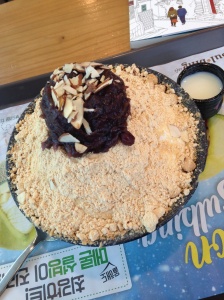 When my patbingsu arrived I dug in, though I knew from the start that this wasn’t going to be the perfect patbingsu of my dreams. The mound of shaved ice was coated with crumbles of nutty soy bean powder, which formed into chewy nuggets in my mouth—not unpleasant, but different. Instead of intact red beans cooked into a syrupy sauce, the patbingsu was topped with an immobile lump of red bean paste, which I had to work apart with my spoon to ensure it would be evenly distributed as I ate. And the tiny pitcher on the side contained a thin, runny version of condensed milk, not the thick type I’m accustomed to seeing on shaved-ice desserts. It was all, in the end, fine. But not extraordinary. I decided that tomorrow was another day, another opportunity to find a quality patbingsu.
When my patbingsu arrived I dug in, though I knew from the start that this wasn’t going to be the perfect patbingsu of my dreams. The mound of shaved ice was coated with crumbles of nutty soy bean powder, which formed into chewy nuggets in my mouth—not unpleasant, but different. Instead of intact red beans cooked into a syrupy sauce, the patbingsu was topped with an immobile lump of red bean paste, which I had to work apart with my spoon to ensure it would be evenly distributed as I ate. And the tiny pitcher on the side contained a thin, runny version of condensed milk, not the thick type I’m accustomed to seeing on shaved-ice desserts. It was all, in the end, fine. But not extraordinary. I decided that tomorrow was another day, another opportunity to find a quality patbingsu.
I left Sulbing and walked up the wide street of Samil-daero to my next destination (reached without difficulty, thank goodness), Bukchon Hanok Village. Bukchon Village is a mostly residential area filled with hanok houses, built in a traditional Korea style. While the local tourism organization encourages visitors to walk around the neighborhood and even provides a map with a suggested route, there are also multiple signs asking that outsiders be quiet and not knock on doors. I would imagine that having to put up with hordes of tourists is a significant trade-off for the chance to live in a quaint traditional home.
Bukchon Village was indeed quaint, its winding and hilly streets lined with low-built houses of stone, timber, and stucco. Many of the hanok homes appeared to be privately owned, while others had been turned into guesthouses, cafes, and art galleries—a mixture that brought to mind Shanghai’s French Concession (as did the enormous Kiehl’s cosmetics store near the start of the walking route). I noticed with surprise that many of the other tourists had traded in their street clothes for traditional Korean outfits rented from local shops, the women struggling to maneuver their colorful bell-shaped hanbok skirts as they walked along the streets. I mentally filed this away to investigate later: a local custom or something with more meaning?
Sweaty and tired from climbing up and down Bukchon Village’s largely shade-free streets, I made my way to the subway station and rode south toward my next planned destination, Seoullo 7017, which I had learned about via local author Colin Marshall’s blog. Opened only a few weeks prior to my visit, Seoullo 7017 is a “skygarden” and pedestrian path built on a decommissioned freeway overpass, a Korean version of New York’s High Line.
But when I arrived at the Seoul Station subway stop, which sits next to one Seoullo 7017 access point, my attention was diverted by the train station in front of me. Not the shiny glass-fronted station/shopping mall currently in use (though I did duck in there for a few minutes of air-conditioned relief), but the old brick-and-stone one next to it, which I immediately recognized as having been constructed during the years of Japanese rule (1910-1945) for its resemblance to buildings in Taipei and Manchuria. Seeing that the station was now an art museum with free admission, I decided that Seoullo 7017 could wait.
The modern art exhibit on view inside the station was totally incomprehensible to me—aside from the quote from Back to the Future Part III in one installation—but I was really there for the architecture and history. Many details from the building’s previous life had been restored or preserved: heavy drapes framed the windows, wainscoting still featured intricate “double happiness” carvings, and above the main doorway a round clock displayed the time—less important when you’re touring an art exhibition than catching a train.
Once finished with the station, I resumed my original course and headed up to Seoullo 7017. The walkway of the former overpass wasn’t crowded, but there were a good number of people checking out Seoul’s newest public park. A major reason cited for its construction was the dearth of green spaces in Seoul, and cement planters scattered along the pedestrian path were filled with plants and flowers—living things that softened the brutalist architecture of the overpass.
Although Seoullo 7017 actually doesn’t rise very far above the city streets, the slight elevation offered me a different perspective on Seoul. The city felt more expansive and open than it had on the ground below, and I could see that the seemingly chaotic traffic actually moved according to an intricate choreography, guided by dozens of lines and arrows painted on the pavement. I spent a few minutes just standing by the railing, watching the activity below and gaining a new appreciation for a city that had largely felt chaotic and cramped during the few days I had been there.
I had entered Seoullo 7017 more or less in the middle of the one-kilometer-long park, and decided to walk in the direction of Namdaemun Market, the largest market in Korea. Namdaemun was a quick re-immersion into chaotic and cramped Seoul, its streets crammed with shoppers and tourists. I quickly grew less interested in seeing the market than in getting out of it, and I let the tide of people carry me toward one of the exits. There, I found a line of shoppers waiting in front of a mobile food cart, where a man was frying puffy round discs of hotteok as fast as he could. These filled pancakes had appeared on all the lists of “Korean street foods you must try” I had consulted, and I decided that the long line of customers meant that this guy was known for serving good hotteok. I pulled a 1,000 won (about $.90) note out of my wallet and joined the queue.
Several minutes later, I was gingerly holding an oily hot hotteok tucked inside a Dixie cup that the cart’s cashier/assistant had sliced down the side to form a protective sleeve. The laminated cardboard of the cup still wasn’t quite enough to keep my fingertips from protesting, but I managed to hold on as I pushed my way back through Namdaemun Market toward Seoullo 7017. Nabbing a bench as soon as I reached the skygarden (which meets the surface street at Namdaemun), I finally bit into the now-cooled pancake. I’d read that hotteok were usually filled with brown sugar and honey, but this one was savory, stuffed with shredded carrots, sliced scallions, and soft rice vermicelli mixed with soy sauce. Though it was approaching 6:00pm and I expected to eat dinner soon, I wolfed down the whole thing, telling myself that I needed something to tide me over until I reached the restaurant I had chosen for the evening’s meal.
That turned out to be a good move, because finding that restaurant was my biggest challenge in Seoul.
I’d picked Sigol Bapsang because I’d read on several blogs about its all-banchan meal. Banchan are little dishes of cold appetizers served with every meal in Korea; there’s always kimchi, plus a few other offerings, usually vegetarian, like glazed potatoes or green beans with chili paste. Whenever I’m in a Korean restaurant, I inevitably remark that I like banchan so much that I could just eat them and be happy. Sigol Bapsang sounded like my idea of heaven: for 8,000 won (about $7), I’d get a set meal consisting of rice, tofu soup, and (according to information online) 20 banchan dishes.
But first I had to find the damn place.
I followed the vague directions I’d found online, supplemented by my map. Itaewon subway station. Exit 2. Walk straight, through the heart of Seoul’s expat neighborhood, where the streets were filled with dodgy-looking spas and pizza places advertising Brooklyn Brewery beer. Look for a street named Hannam-dong and turn left; the restaurant should be just in from the corner. I walked and walked, past where I expected Hannam-dong to be, then way past where I expected it to be. Realizing I was reaching the next subway station, I turned around and retraced my steps. Pulling up the address card and map I had saved on my phone, I approached a parking lot security guard and asked him if he knew where Sigol Bapsang was; he grimaced at the phone screen and told me to walk “two or three more blocks” back toward the subway station. (In fact, it turned out that Sigol Bapsang is maybe 100 feet from the parking lot where he works.) I walked all the way back to the subway station, then a little farther, just in case, and started to think that pizza and a Brooklyn beer might not be a bad dinner instead. Hot, tired, getting hungry (thank goodness I’d eaten that hotteok), I decided to give it one last shot, but I needed help. I entered a Nike store and hoped that I’d find a kind-hearted English-speaking salesperson inside.
I actually found two kind-hearted English-speaking salesmen, who pulled out their own phones to figure out where this mysterious restaurant was and then drew me a detailed map with helpful landmarks (Audi dealer, Gambian Embassy). Setting out from the store with fresh resolve, I used their map to triangulate my way to a tiny street that I had already passed several times and was most definitely not labeled Hannam-dong on the street sign—and there, I finally found Sigol Bapsang, home of the all-banchan meal.
After all the effort it took to get there, I wish I could say that my dinner at Sigol Bapsang was fantastic, a delicious spread of dishes better than I what I could find anywhere else. But it wasn’t and they weren’t. The banchan were good, don’t get me wrong, and some were close to great. I didn’t, however, get the twenty dishes that food bloggers had indicated used to be the standard; rather than raise prices, it seems, Sigol Bapsang instead reduced the banchan spread to twelve. None of them was so fantastic that I was tempted to ask for a refill after I’d methodically consumed all the banchan, emptying each white plastic bowl and then adding it to a tidy stack in the middle of the table. It was all very … okay.
Somewhat deflated, I rode the subway back to Insadong and walked through the night market—not as vibrant on a Tuesday evening as it had been the previous Friday, but bustling nonetheless. Reaching my hotel room, I tapped open the Fitbit app on my phone, curious to see how many steps I’d walked that day. I gaped as the number 25,494 popped up. I knew I’d covered a lot of ground—and gotten spectacularly lost twice—but it was still far and away the highest single-day step count I’d logged since acquiring the Fitbit in February.
No wonder my feet hurt.
Life Happens. Coffee Helps.
Navigation-wise, Wednesday went much better than Tuesday—mostly because all the places I wanted to go were more or less on top of subway stations, so I never had to walk far to find anything. (I still logged more than 22,000 steps that day, though.)
After breakfast at my hotel, I set off for Gyeongbokgung, the main palace of the Joseon Dynasty (1392-1910). Arriving just a few minutes after it opened, I felt like I had the grounds practically to myself at first, only a few other small groups of tourists scattered among the palace’s succession of courtyards (if you’ve been to Beijing’s Forbidden City, Gyeongbokgung is smaller and less ornate, but built in a similar style). Though high-rise buildings stand just a few hundred yards from the palace’s main entrance at the south of the complex, facing north you see green mountains rising in the distance, making the palace feel like it’s the last thing standing between city and countryside.
Gyeongbokgung’s grounds began to fill with other visitors as time passed, and as I had the previous day in Bukchon Village, I noticed that most of the young women had donned colorful hanbok dresses, with a few of the young men accompanying them much less confidently wearing their own traditional outfits. I wondered again if this was a local custom—people who really wanted to immerse themselves in history wore the costume of imperial times while touring? Was it done for the photo ops? I still don’t entirely know the answer, although some googling after the trip informed me that palace admission fees are waived for anyone wearing hanbok (Gyeongbokgung was free that day anyway, though maybe other visitors didn’t know that in advance—I certainly didn’t), and the official Korea Tourism Organization website encourages hanbok rental both as an experience of living history and because the dresses make for better photos at tourist sites.
From the palace, I walked to the National Folk Museum of Korea next door, where the grounds contained an assortment of different dwellings that showed how people lived in the days of yore. (Curiously, one house also featured an incongruous piece of pop art—a fiberglass radish top nearly as tall as the house emerging from the ground in front of the door.) I walked down the “Street to the Past,” which promised to help visitors “Experience Mom and Pop’s Childhood” with life-size dioramas of shopfronts and school classrooms. Inside the museum itself, I quickly made my way through the three galleries—English-language signage was infrequent, and I was getting hungry for lunch—that portrayed Korea’s social and cultural history from prehistoric through modern times.
A short subway ride later and I was in Gwangjang Market. Like Namdaemun Market, Gwangjang is a sprawling spiderweb of shops selling everything from hanbok to plastic shower shoes. But Gwangjang is also, more than Namdaemun, recommended as a place to eat, most of its food stalls specializing in one or two local dishes (although there’s a lot of repetition among the stalls; I mostly picked the busiest ones, on the admittedly fallacious assumption that they must offer the best version of their particular specialty). I decided from the outset that my goal was to try as many different things as I could, which meant that I couldn’t actually finish any of them; this is one time that being a solo traveler doesn’t really work, and I’m pretty sure I insulted at least two of the three women running food stalls where I ate by leaving food on my plate. Major cultural faux pas.
I started with the market’s famous mayak gimbap, or “narcotic rice rolls,” so named because they’re supposed to be as addictive as a drug. Constructed like sushi—a seaweed wrapper rolled around a column of sticky rice and vegetables—the mayak gimbap were served with a dipping sauce that started out neutral but ended with quite a kick. In search of something to soothe my smarting taste buds, I moved on to a bindaetteok, or fried mung bean pancake accompanied by a dish of onions and vinegar for dipping. Lightly greasy and definitely unhealthy, the bindaetteok was my favorite Gwangjang Market snack. After walking around the non-food section of the market for a bit to give my stomach some time to digest, I returned for one final round, this time opting to try the kimchi-and-tofu-stuffed dumplings that sat in piles atop nearly every counter. These turned out to be the one thing I ate in Korea that I not only didn’t love but really didn’t even like: the dumpling skins were too thick, the filling dry and crumbly, the whole experience an unpleasantly chewy one. I forced down two dumplings and decided that I’d had my fill—literally—of Gwangjang Market.
My next stop was for dessert—a re-do of the previous day’s attempt to find the perfect patbingsu. This time I ventured down to Gangnam (the trendy neighborhood immortalized in “Gangnam Style”), where a restaurant atop the Hyundai Department Store was said to serve up the city’s best patbingsu.
The first thing that struck me when I stepped off the escalator and approached Meal Top was that nearly every table at the Tuscan-styled cafe was surrounded by women. I hadn’t realized until that moment how … masculine many spaces in Seoul felt, even though there were certainly plenty of women in the city. But stepping into a restaurant completely filled with women suddenly made me conscious of how different the vibe inside Meal Top felt compared with everywhere else I’d gone.
 When my patbingsu arrived, I braced myself for disappointment, knowing it was unlikely I’d find perfection in only my second attempt. But just like last year in Taiwan, the second shaved-ice dessert of my trip was indeed perfection—soft snowdrifts of ice infused with milk, subtly sweet red beans, two precise cubes of glutinous rice cake sitting on top, to be carefully parceled out as I savored the dessert. It was all I could do not to order a second bowl.
When my patbingsu arrived, I braced myself for disappointment, knowing it was unlikely I’d find perfection in only my second attempt. But just like last year in Taiwan, the second shaved-ice dessert of my trip was indeed perfection—soft snowdrifts of ice infused with milk, subtly sweet red beans, two precise cubes of glutinous rice cake sitting on top, to be carefully parceled out as I savored the dessert. It was all I could do not to order a second bowl.
I exited the department store and started walking the streets of Gangnam, but within minutes knew that my heart wasn’t in it; I don’t really care about shopping and hadn’t done the research to know what other attractions were in the area. Spotting a small coffee shop named “Good Night and Good Luck” (motto: “Life Happens. Coffee Helps.”), I went inside and ordered an iced latte, then spent an hour sipping it and reading Seoul Sub→Urban* by Charles Usher, a book of short essays about the city I’d picked up at the AAS conference and had been reading whenever I’d had a few minutes to spare over the previous days.
The coffee did indeed help, and I left the cafe with a renewed sense of purpose. My goal: to get a foot massage. (See: 25,494 steps the previous day.) But while I found at least a dozen plastic-surgery clinics in the streets immediately surrounding Good Night and Good Luck, the neighborhood appeared entirely devoid of massage parlors—or at least any with English-language signs. After half an hour of searching, I admitted defeat and trudged toward the subway for my next, and final, Seoul stop.
 Jamsil Baseball Stadium is a character-less concrete cylinder, the type of sports venue built in the United States during the 1960s and 70s and then replaced with “ballparks” in the 1990s and 2000s. On the plaza outside the stadium, vendors set up tables laden with dried seafood and to-go boxes of fried chicken. Though game time was more than 90 minutes away when I arrived, there were already long lines at the ticket windows. I joined one, nervous for the first time about how I’d conduct a transaction without being able to speak or read the language. I used my time in line to examine the ticket prices and color-coded stadium map posted above the window and typed “17,000” into the calculator on my phone—the price of a field-level seat in the area around home base (about $15). When I reached the blacked-out window, though, the disembodied female voice that came through a small opening greeted me in perfect English and immediately demanded to know which team I rooted for.
Jamsil Baseball Stadium is a character-less concrete cylinder, the type of sports venue built in the United States during the 1960s and 70s and then replaced with “ballparks” in the 1990s and 2000s. On the plaza outside the stadium, vendors set up tables laden with dried seafood and to-go boxes of fried chicken. Though game time was more than 90 minutes away when I arrived, there were already long lines at the ticket windows. I joined one, nervous for the first time about how I’d conduct a transaction without being able to speak or read the language. I used my time in line to examine the ticket prices and color-coded stadium map posted above the window and typed “17,000” into the calculator on my phone—the price of a field-level seat in the area around home base (about $15). When I reached the blacked-out window, though, the disembodied female voice that came through a small opening greeted me in perfect English and immediately demanded to know which team I rooted for.
“Ummm … I’d like a 17,000 won ticket on the third-base side of the red section,” I replied, holding up my phone with the numbers displayed on the calculator screen, not sure what else to say. I suddenly couldn’t remember which teams were playing that night.
“But which team do you like? Doosan or SK?” the invisible woman insisted. “Doosan is on the first-base side. SK is on third.”
“Then … SK,” I said, because I like to sit along the third-base line and have no allegiance to either team. I passed some money through the opening in the window and a body-less hand pushed my ticket back, the voice ringing out once again. “Enjoy the game!”
I found my seat—only a few rows up from the field, for $15!—and relaxed in the sun as a steady trickle of ticket-holders made their way into the stadium. Yet when the first pitch was thrown an hour later there were still far more empty seats than occupied ones, especially on the SK side, since Doosan was the home team. Again, I was surprised to see how many women were at the game, alone and in groups, many of them wearing Doosan jerseys and banging inflatable spirit sticks.
I bought a watery Cass beer and a box of chicken nuggets (in retrospect, the food choices outside the stadium were better than those inside) and watched the game. I had spent so much of the previous five days feeling jet-lagged and confused and incoherent and lost in Seoul; it was reassuring to be in a place where I knew what was going on, which plays were good and which ones were not. Some of the little details were different—every time a batter hit a foul ball into the stands, a team of linesmen blew on whistles to alert people to watch for flying objects—but baseball is, for me, a universal language.
Coda
Early the next morning, I left my hotel and headed to the airport—but got lost once more, in search of an elusive subway entrance that reportedly had an elevator. I finally gave up and wrestled my suitcase onto a narrow escalator, feeling hot, tired, and lost as I descended into the station. For me, that’s just how it goes in Seoul.
 Further Reading (In Addition to Links Above)
Further Reading (In Addition to Links Above)
Everything I know about seeing baseball in Seoul I learned from this Time Out article.
The Los Angeles Review of Books has a Korea Blog, chiefly authored by Colin Marshall, whom I got to meet briefly during my time in Seoul. Marshall also published an article at The Guardian earlier this month on Seoul’s “lack of soul” and ongoing identity crisis.
I should have read this before I went to Korea, but after I returned borrowed journalist Michael Breen’s recently published The New Koreans: The Story of a Nation* from the library and, a few chapters in so far, have found it a good introduction to a country about which I know shamefully little (for some reason, my graduate education focused much more on North Korea than South).
The Seoul subway is, indeed, clean and efficient and cheap. I didn’t try the vending-machine coffee, though.
After seeing this NPR video by Elise Hu, I desperately wanted to get my pores vacuumed but ran out of time. I bought a ten-pack of snail-mucus sheet masks for my face instead (and they are, as far as I can tell, pretty great for my skin).
* Amazon affiliate link. I earn a small commission if you purchase from Amazon via this link.
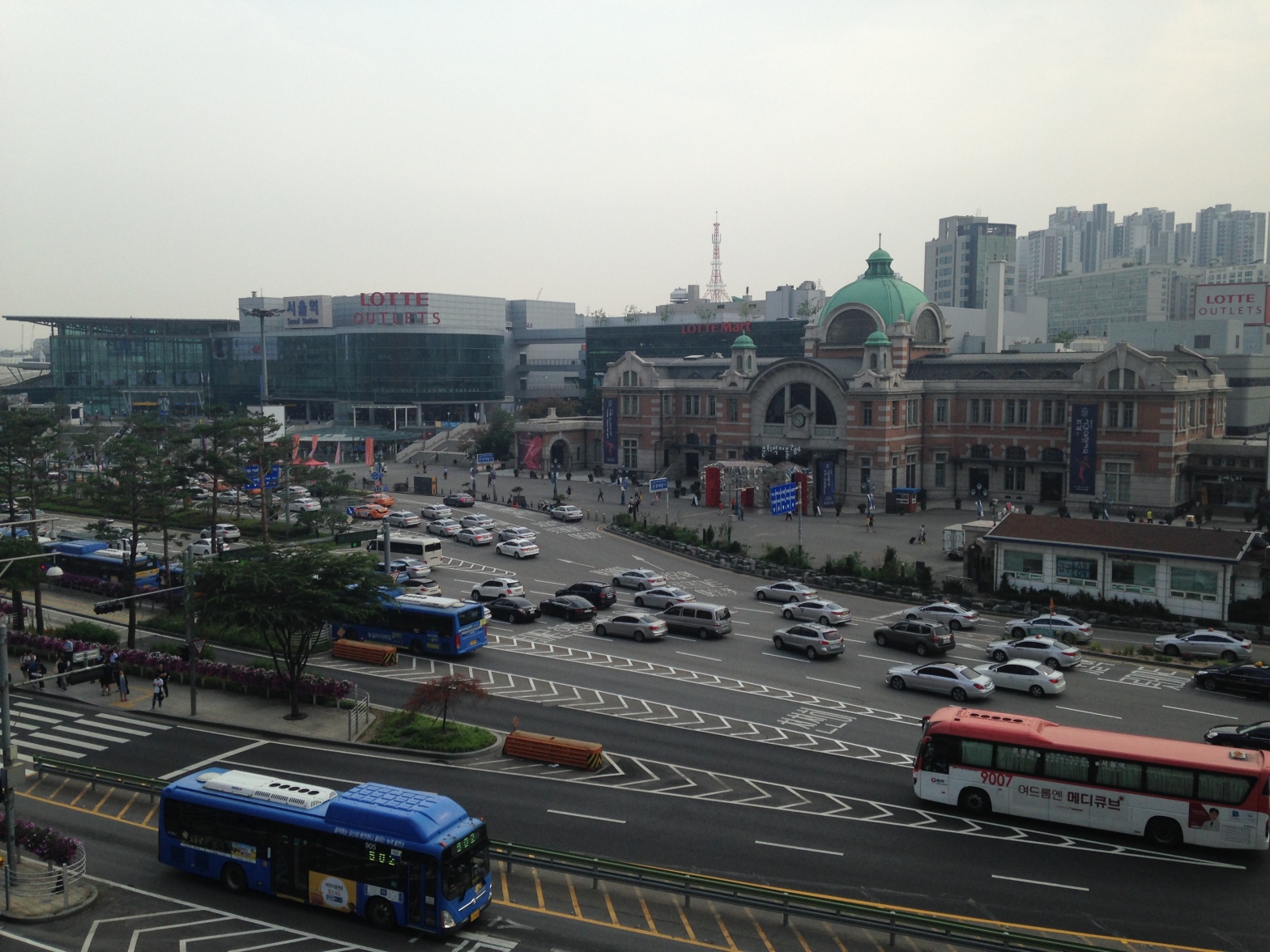
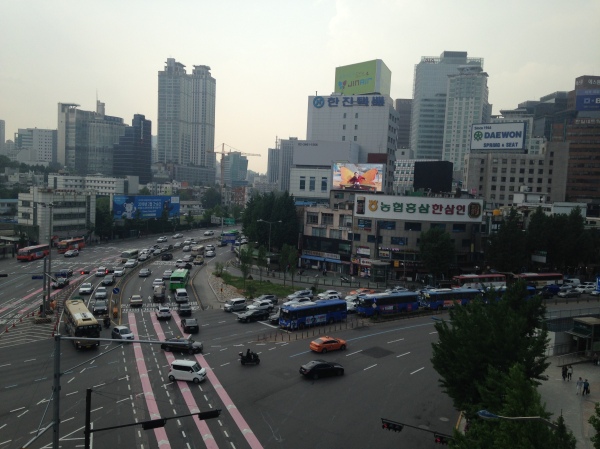




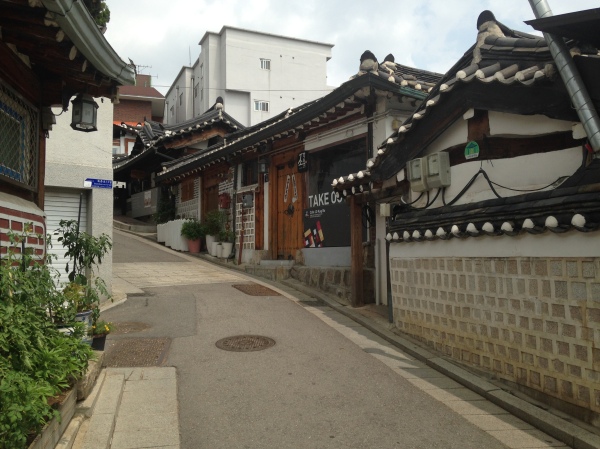
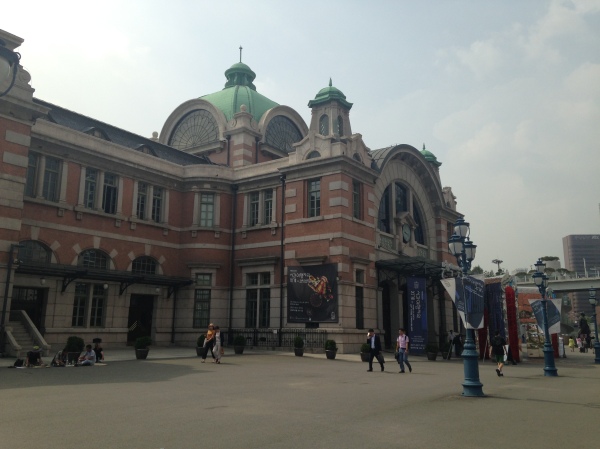

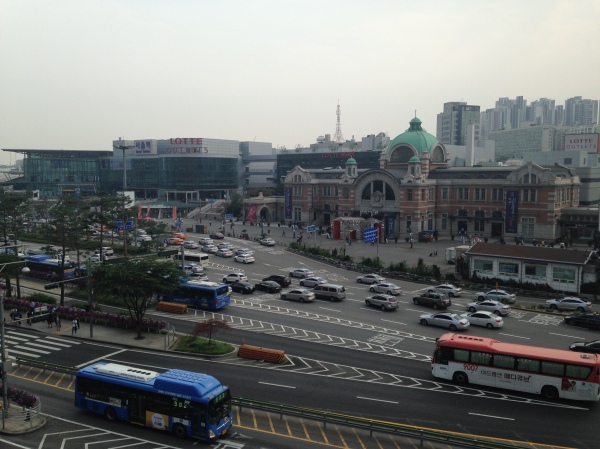
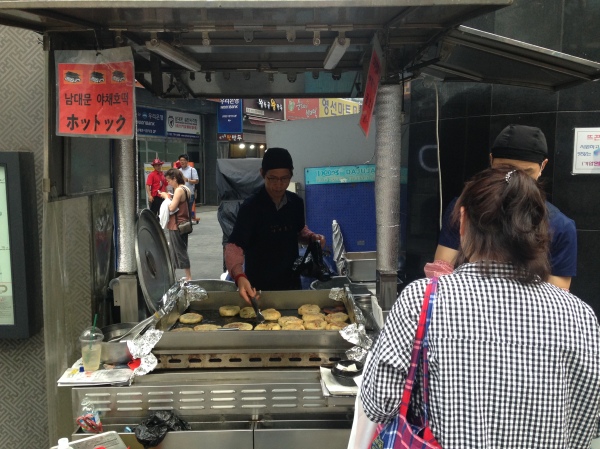

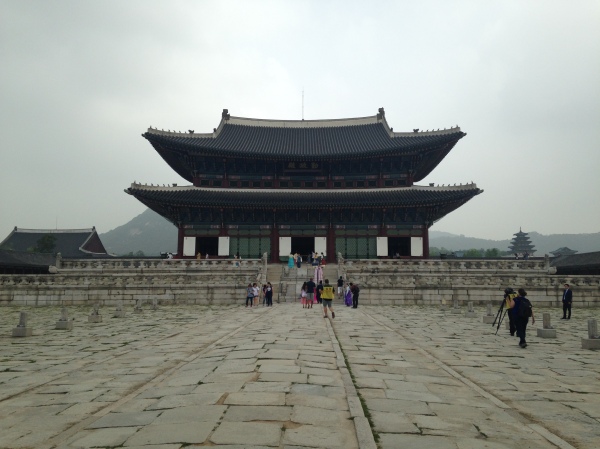




Really enjoyed reading this. Welcome to the terrible world of the directionally challenged! I’m surprised that your FitBit didn’t blow up